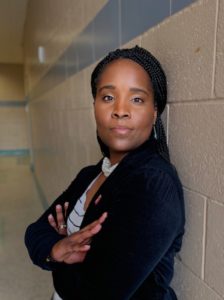I trust it is the hope of every principal that the educational debt Ladson-Billings refers to is resolved at the end of each academic year and that all students have achieved equitable learning outcomes. But as we know, academic outcomes are not enough. Schools are expected to educate the whole child too, as evident in ASCD’s Whole Child Initiative from 2007.
As a principal of an urban school and a doctoral candidate at Northeastern University, I have fully adopted student-centered learning as a framework to not only increase the academic progress of students but to also empower them. Student-centered learning is a method to leverage student agency in order to boost student engagement during the learning process. As the name indicates, student-centered learning is about positioning students as co-designers of lessons, assessments and activities.

For the past two years, I have worked to increase student voice at my school using student surveys and the creation of student discussion groups. I intentionally gather the voices that are often left out of decision making, through a process Silvia Cynthia Bettez calls “critical communities.” Critical communities are spaces where the voice of the unheard are listened to in an environment that is culturally responsive. When students are connected to each other, their teachers, and the community in ways that lift up rather than marginalize their authenticity, they gain a sense of belonging. This, in turn, promotes their desire to learn from others, to take academic risks and to try new things.
So how do we use student voice to increase a students’ sense of belonging?
At the Springfield Renaissance School, an EL Education school, I have worked to incorporate the following initiatives that we have observed increase student voice:
- Critical Communities: Twice a month I pull together 35 students in grades 6-12. Four to six students from each grade make up the team. We meet for an hour to discuss student concerns, review school policy and plan school events. The group has been instrumental in changing the attendance policy, hosting a cultural event for Black History month, and working to increase student celebrations. For an hour I am in the hot seat. The agenda is created by students, and my job is to listen and respond.
- Race and Equity Series: Every Wednesday, high school students are provided a space to talk through issues about race and equity at our school and in society. The topics are set by the students. I co-facilitate the discussion with the students who take the lead on setting norms and leading the conversation. Topics have ranged from, “The use of the N-word,” to “What about me? Don’t I matter?” The discussion prioritizes student voice. Teachers interested in joining can listen in, but the heart of the conversation is for students to have a space to discuss their feelings and ideas.
- Student Surveys: Student surveys are used throughout the school year and work to gather a deeper understanding of students. Students work with the leadership team to review the data from the survey and create an action plan to address the concerns that arise in the survey data.
My intention in all three initiatives is to not only increase student voice but to make sure that Black and Brown students are central to decision-making at my school. Every day that I walk through the building, I am not just thinking about raising test scores and closing the so-called “achievement gap”; I am thinking about how I can help make this building a place where every student belongs and feels loved and cared for. I believe this is the foundation for rich, student-centered learning opportunities that will achieve equity.
Arria Coburn is the principal of The Springfield Renaissance School located in Springfield, Massachusetts. In 2018, she was named the Magnet School 2018 Region 1 Principal of the year. She is also a Distinguished Fellow of the Student-Centered Learning Research Collaborative and has spent the past two years collaborating and researching practices that increase student achievement of marginalized groups. Currently, she is enrolled in the EdD program in Curriculum, Teaching, Learning, and Leadership at Northeastern University with an interest in studying how to use student-centered learning strategies to increase the achievement of African American students. Arria is the proud wife to Leslie Coburn and the mom of Avery and Zoey Coburn.
References
Bettez, S. (2011). Building Critical Communities Amid the Uncertainty of Social Justice Pedagogy in the Graduate Classroom. Review of Education, Pedagogy, and Cultural Studies, 33(1), 76-106.
Ladson-Billings, G. (2006). From the achievement gap to the education debt: Understanding achievement in US schools. Educational researcher, 35(7), 3-12.
McCloskey, Molly. “The Whole Child.” The Whole Child, 2007, Fall, http://www.ascd.org/publications/newsletters/policy-priorities/fall07/num51/full/The-Whole-Child.aspx
Milner, H. (2013). Rethinking Achievement Gap Talk in Urban Education. Urban Education, 48(1), 3-8.
Ware, F. (2006). Warm Demander Pedagogy: Culturally Responsive Teaching That Supports a Culture of Achievement for African American Students. Urban Education, 41(4), 427-456.